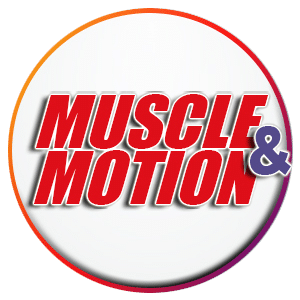The Supine Leg Raise is a highly effective exercise that targets the abdominal muscles, helping to improve strength and core stability. Whether you’re a beginner or experienced at the gym, incorporating supine leg raises into your workout routine can yield remarkable results.
This Muscle and Motion article explores the benefits of the Supine Leg Raise, the specific muscles it targets, and several variations to keep your workout routine fresh and challenging.
Which muscles will you strengthen with the Supine Leg Raise exercise?
- Rectus Abdominis– the rectus abdominis contracts isometrically, flexes the spine, and prevents an anterior pelvic tilt while actively adapting to the leg movements, making this exercise a true abs strengthener!
- Abdominal Obliques – the abdominal obliques contract isometrically and assist the rectus femoris in stabilizing the trunk and flexing the spine.
- Hip Flexors – the iliacus and the psoas major flex the hip with the assistance of the rectus femoris, the sartorius, and the tensor fascia latae.
How to perform the Supine Leg Raise exercise
- Lie flat on your back on a comfortable exercise mat or the floor. Extend your legs fully and place your arms by your sides.
- Engage your core muscles by drawing in your belly button in towards your spine. This will help stabilize your lower back throughout the exercise.
- Keep your legs straight and together. Slowly lift both legs off the ground simultaneously until they form a 90-degree angle with your body.
- While maintaining control, slowly lower your legs back down towards the floor, stopping just before your heels touch the ground.
- Ensure that you keep your abdominal muscles engaged and your lower back pressed into the mat.
- Exhale as you raise your legs back up to the starting position, and focus on keeping the movement slow and controlled.
- Repeat the exercise for the desired number of repetitions.
Proper form tip: avoid arching the lower back
Maintaining proper form is crucial when performing the Supine Leg Raise exercise. One common issue is arching the lower back, which can lead to ineffective engagement of the core muscles.
Here’s a simple technique to help you maintain a stable pelvis and avoid arching:
- Place your hands behind your lower back, with your palms resting against the floor or exercise mat.
- As you lift your legs off the ground, focus on keeping your lower back in contact with your hand throughout the movement.
- By maintaining this connection, you’ll help stabilize your pelvis and ensure that your core muscles are properly engaged.
This technique serves as a tactile reminder to keep your lower back neutral and rigid, promoting optimal alignment and maximizing the effectiveness of the exercise. Remember to maintain a controlled and slow pace while performing the Supine Leg Raise, focusing on the quality of the movement rather than speed or number of repetitions.
Two alternative variations for the Supine Leg Raise
- Supine Bent-leg Raise
The Supine Bent-leg Raise focuses on targeting the lower abdominal muscles and hip flexors. In this variation, you bend your knees and lift them towards your chest while lying on your back.
- Supine Bicycles
The Supine Bicycle exercise is another variation for the Supine Leg Raise. In this exercise, you alternate between lifting your legs and engaging in an asymmetrical motion. This alternating leg movement intensifies the engagement of your core muscles as they adapt to the changing leg positions.
At Muscle and Motion, we believe that knowledge is power, and understanding the ‘why’ behind any exercise is absolutely essential for your long-term success.
Let the Strength Training App help you achieve your goals! Sign up for free.
Written by Physical Therapist Uriah Turkel


